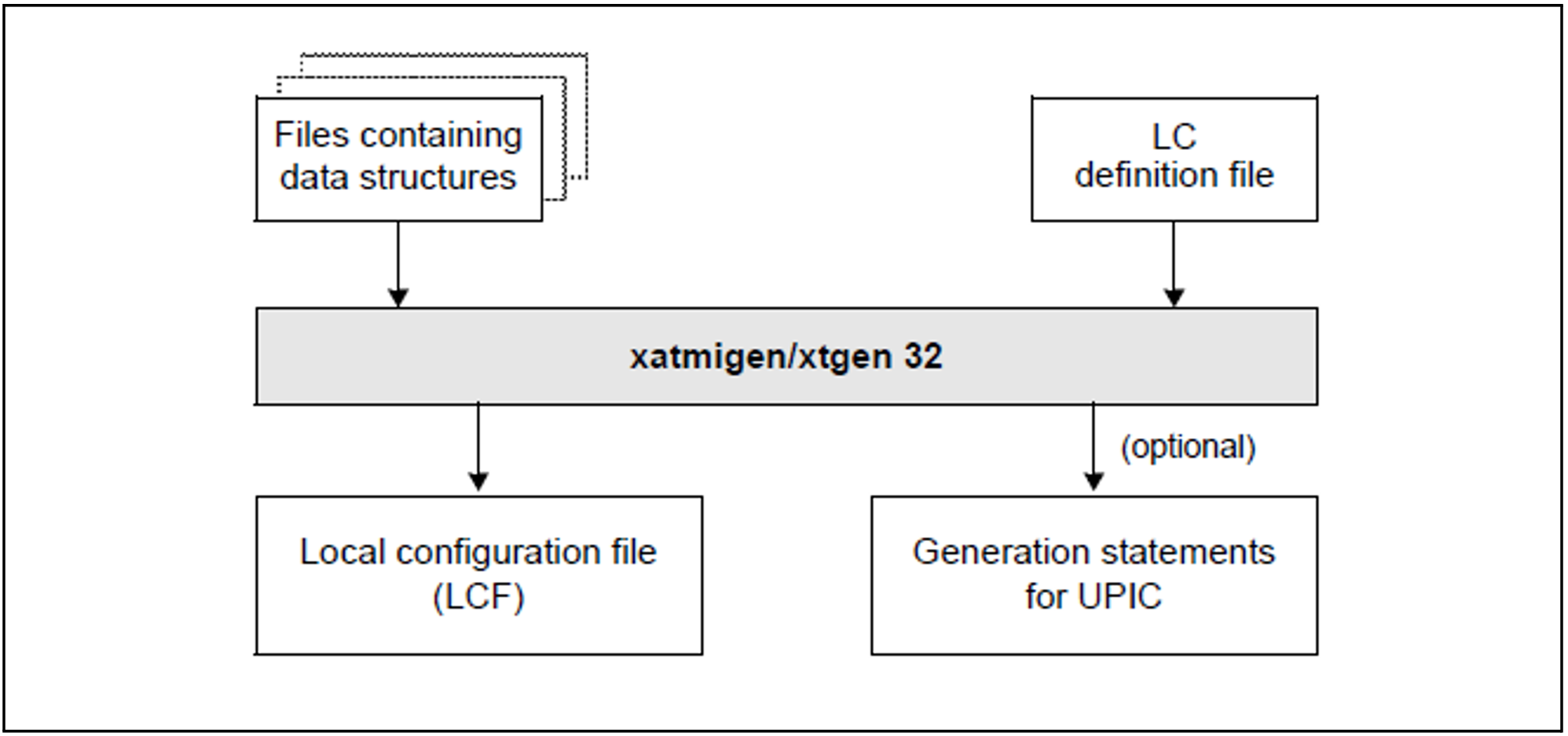The xatmigen tool creates a local configuration file (LCF) from a file containing the local configuration definition (LC definition file) and one or more files containing C or COBOL data structures (LC description files), see diagram below:
Figure 20: Working with xatmigen
The local configuration file is structured in the same way as the LC definition file, and differs from this only in the description of the buffer type, buffer length, and buffer syntax string. In other words, the operands LEN=, SYNTAX=, and possibly TYPE= are added to the BUFFER statements compared to the definition file.
If the buffer type is not specified in the LC definition file, xatmigen configures the “smallest” value range for the buffer type, i.e. first the type X_COMMON.
All file names must be specified explicitly. If desired, a file can be created which contains the configuration statements for UPIC.
On Windows systems, success and error messages are written to the program window.
On Unix and Linux systems, success and error messages are written to stdout and stderr.
On BS2000 systems, success messages and error messages are written to SYSOUT and SYSLST.
Although in principle it is possible to edit the LCF, you are strongly advised not to do this.
Calling xatmigen
On Windows systems
xatmigenis called withxatmigen[.exe] parameterxatmigen.exeis located in the upic-dir\xatmi\exdirectory.On Unix and Linux systems,
xatmigenis called withxatmigenparameterxatmigencan be found in the upic-dir/xatmi/exdirectory.On BS2000 systems, you start
xatmigenwith the following command:/START-XATMIGEN % CCM0001 PARAMETER EINGEBEN: * parameter
When entering the command, you can, of course, use lowercase letters in place of uppercase letters.
You can specify the following parameters; the switches (-d, -l, -i, -c) must be written in lowercase.
The option -d and, if specified, the options -l and -c must each be followed by the associated parameter. Specification of an option without a parameter is not permitted.
[ upic ] -d lcdf-name [ -l lcf-name ] [ -i ] [ -c stringcode ] [ descript-file-1 ] ... [ descript-file-n ]
upic | If specified, a file If specified, upic must be the first parameter in | ||
| -d lcdf-name | Name of the LC definition file; mandatory specification | ||
-l lcf-name | Name of the local configuration file to be created. The name must comply with the conventions of the respective operating system. It is advisable to choose a name with a maximum of 8 characters and add the extension “ Any existing LCF of the same name is automatically overwritten. If the option is omitted, | ||
-i | Interactive mode, i.e. the string code is queried for each typed buffer containing a character array. The possible specifications for the string code are described under the “ The | ||
| -c stringcode | The specified string type applies for the entire The following values can be specified for stringcode (see table on "Typed buffers"):
If no specification is made, Individual characters are also interpreted as T.61 strings (stringcode= | ||
| descript-file-1... descript-file-n | List of files containing the include or COPY elements with the data structures of the typed buffers. If the list is omitted, only the type |

